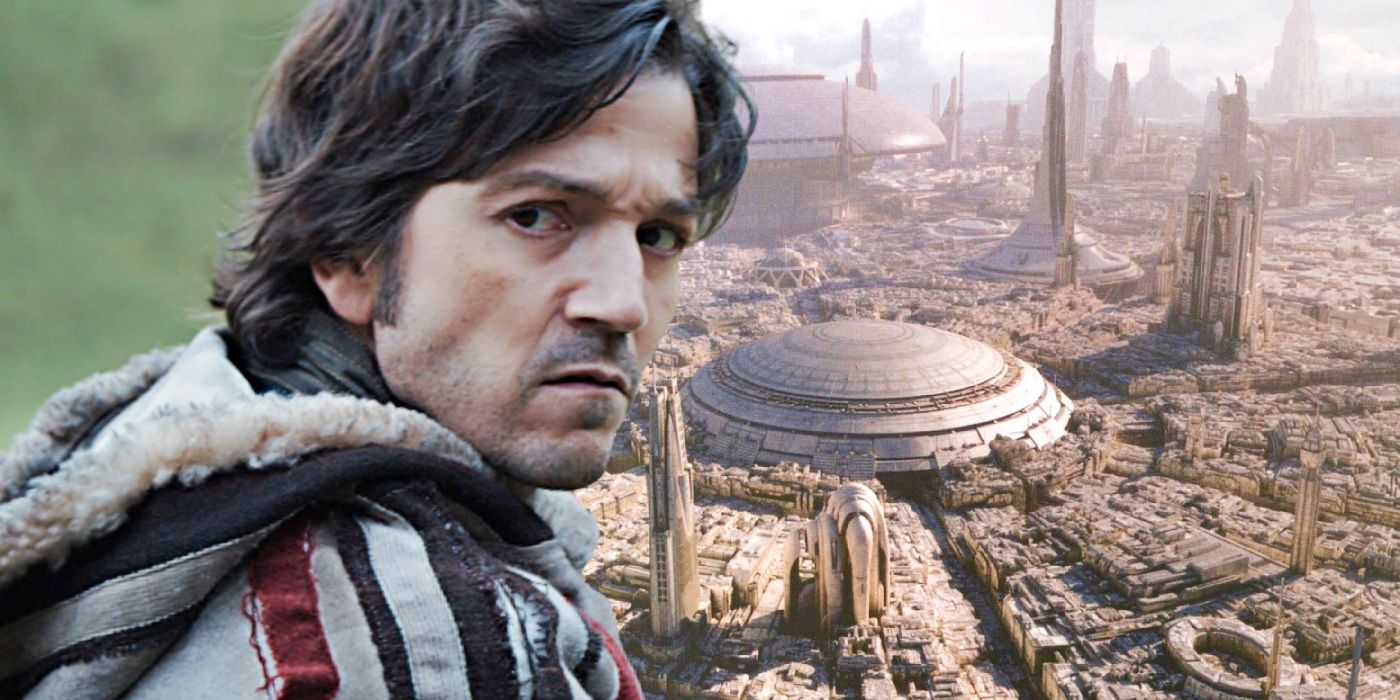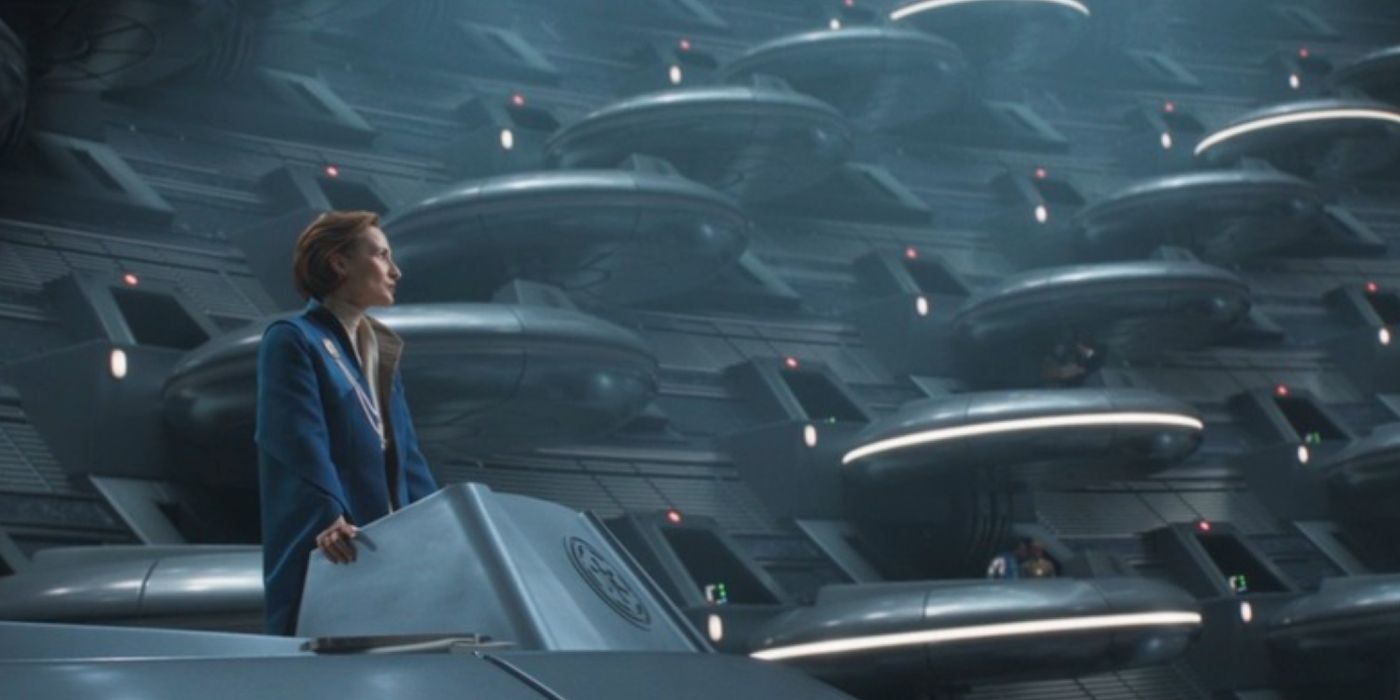Andor Visual Effects Producer TJ Falls explains how Coruscant sets from George Lucas' Star Wars prequels are reused for the latest Disney+ series. Taking place 5 years before the events of Rogue One: A Star Wars Story, Andor chronicles the events of Cassian Andor's (Diego Luna) life that see him eventually become a hero of the Rebellion. The show is created by Rogue One: A Star Wars Story writer Tony Gilroy and has earned rave reviews from audiences and critics alike. Although much of Andor follows Cassian's adventures on various planets, the show also focuses on Genevieve O'Reilly's Mon Mothma, a senator on Coruscant who secretly works to build the Rebel Alliance.
In an exclusive Screen Rant interview, Andor's Visual Effects Producer, TJ Falls, reveals how the show reuses Coruscant set assets from the Star Wars prequel trilogy. Although it's now been over 15 years since the release of the last prequel movie, Star Wars: Episode III – Revenge of the Sith, and CGI technology has greatly advanced, Falls explains that certain Coruscant sets were still usable for Andor, albeit only after they were updated. Check out Falls' full comment below:
“It's a combination. We're utilizing what we have from the prequels in terms of the way that the city was laid out, with the Senate and how that was built. Now, given the time from when the prequels were made to now, we've had to recreate most of those pieces. But not all of them. Some of them, we've taken the base models and updated them into our system in order to build out the greater Coruscant. So, it's a little bit of still utilizing what we had in the past and modernizing it into the view of the city for our current show.”
How Much Has Changed Between The Prequel Trilogy And Andor
Andor takes place between the events of Star Wars: Episode III – Revenge of the Sith and Rogue One: A Star Wars Story. Following the destruction of the Jedi in the final prequel movie, the subsequent years see Emperor Palpatine's power growing, with the Galactic Empire tightening its grip across the galaxy. Coming from the acclaimed original Star Wars movies, Lucas' prequels in the early 2000s featured a drastically different visual style. While visual effects also played a crucial role in the original trilogy, much of the prequels were shot using green screen, with sets created using CGI.
Green screen is still used for Star Wars productions today, but, as was first prominently featured in The Mandalorian, a new piece of technology called The Volume has allowed productions to create virtual environments on set, instead of in post-production. This new technology was also used for Obi-Wan Kenobi and even The Batman, but, interestingly, Andor has gone back to a more old-school method of production. The latest Star Wars show relies heavily on practical sets and real-world environments, which lends itself well to the show's grittier aesthetic.
Where the original trilogy featured a weathered look for everything, with pieces of technology, ships, and costumes being heavily worn, the prequels depict environments as more shiny and new. Not all the visual effects in the Star Wars prequels have stood the test of time, but Falls' comment suggests that even almost two decades later some original assets were good enough to still be used in Andor. As a bridge of sorts between Lucas' prequels and the timeline of the original Star Wars trilogy, it's fitting that Andor has married the production technology and methods of both.


